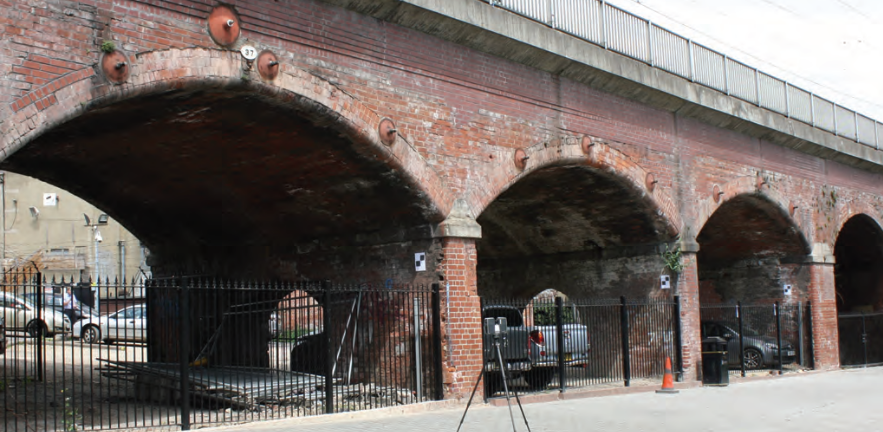
Masonry arch bridges are an integral part of the UK’s road, rail and waterway infrastructure. About 18,000* masonry arch bridges and culverts account for 47 per cent of Network Rail’s total bridge population. These structures have shown themselves to be robust and reliable but many are now facing challenges due to age and modern use. Assessment of these structures often relies on visual inspection and engineering experience to establish when and where a bridge requires intervention. However, visual inspection is costly and time consuming and often does not reveal the underlying mechanism of damage. Understanding the behaviour of these bridges and development of cost effective assessment and maintenance systems will be key to securing their continued effective use. CSIC’s masonry arch bridge research aims to quantify the vulnerability of these structures and provide detailed and accurate data that will better inform maintenance programmes and asset management.
Assessing the current state and long-term prognosis of a Victorian viaduct
Working with industry partner Network Rail, CSIC has been monitoring an operational Victorian masonry arch viaduct in Leeds for the past two years. The objective is to better understand the dynamic response of the viaduct to rail traffic and identify the mechanisms that drive its degradation. The bridge is visibly damaged due to water leakage and past settlements and there has already been maintenance intervention. A speed restriction has been in place on the rail line. CSIC assessed the effectiveness of the existing intervention and whether the damage is progressively getting worse due to temperature cycles and dynamic loads.
Deploying sensing technology
The dynamic response, measured while trains pass over the viaduct, was monitored on two adjacent spans of the viaduct using a Fibre Bragg Grating (FBG) sensing system. To our knowledge, this marked the first ever deployment of FBG sensors in a masonry viaduct worldwide. Evaluation of the resulting fibre strain data was made possible with a novel non-contact videogrammetry solution, provided by Imetrum. The results demonstrated excellent agreement and highlighted the ability of fibre optic cables to detect very small strains to illustrate the flow of forces inside the structure. In addition, laser scanners were used to create a 3-D model of the underside of the arch to measure how the structure has deformed over time. The analysis of the deformed geometry from these models has enabled CSIC researchers to quantify the critical movements experienced by the structure in the past. An understanding of these movements has also helped develop a better understanding of the dynamic response of the viaduct to rail loads as it is also influenced by this existing damage.
What we found
Fibre optic sensing has provided a new understanding of how arches in the viaduct interact during dynamic rail loading. In particular, CSIC found that the rotation of the piers caused an opening in the span, and this action controlled how the arch responded to the dynamic loading. CSIC was also able to identify the critical sections of the structure which experience tensile forces and amplified compressive forces (e.g. due to crack opening or closing), where damage is likely to concentrate in the future.
Interestingly, the dynamic response was not found to be significantly affected by the speed of the train passing over this bridge, which operated at low speed. Further investigation may prove this to be the case at higher speeds and/or other bridge forms, providing an opportunity to modify Network Rail’s response to emerging issues, reducing delays and negative effects to passenger experience.
This project has delivered a better understanding of the structural response of masonry viaducts. The sensing data has allowed CSIC to explain existing damage, to identify critical aspects of the structural response, and to better evaluate the effectiveness of potential intervention techniques.
Next steps
CSIC researchers are now applying the understanding of the response of this particular bridge to other similar viaducts. New assessment techniques are being formulated and measurements in similar viaducts are being recorded for this purpose. CSIC researchers also plan to further explore critical engineering issues, including the degradation of existing damage and the influence of increasing train speed and angle of bridge skew on the dynamic response of masonry arch bridges.
*Orbán, Z. (2004). Assessment, reliability and maintenance of masonry arch railway bridges in Europe. Arch Bridges IV–Advances in Assessment, Structural Design and Construction. Eds: P. Roca and C. Molins, Barcelona, 2004, 152-161.
